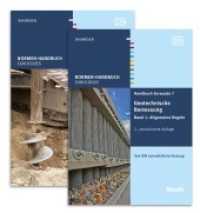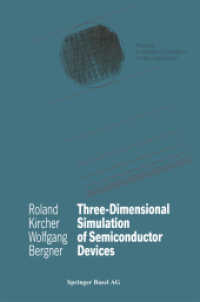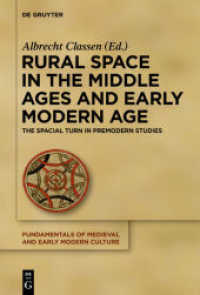Full Description
What happens when Western law is no longer the default referent for legal modernity? This is a deceptively simple question, but its implications are significant for such fields as comparative law, international law, and law and development. Whereas much of comparative law is predicated on the idea that modern law flows West to East and North to South, this volume proposes the paradigm of 'Inter-Asian Law' (IAL), pointing to an emerging field of comparative law that explores the legal interactions between and among Asian jurisdictions. This volume is an experimental and preliminary effort to think through other beginnings and endings for law's movement from one jurisdiction to another, laying the grounds for new interactions between legal systems. In addition to providing an analytical framework to study IAL, the volume consists of fifteen chapters written by scholars from Asia and who study Asia that provide doctrinal and empirical accounts of IAL. This title is also available as Open Access on Cambridge Core.
Contents
Introduction: the emergence of inter-Asian law Matthew S. Erie and Ching-Fu Lin; Part I. Commercial Law: From Firms to International Economic Law: 1. Faux convergence in Asian corporate governance: unmasking the illusion of Anglo-American transplants Gen Goto and Dan W. Puchniak; 2. Inter-Asia's company towns Trang (Mae) Nguyen; 3. International commercial alternative dispute resolution in Asia: charting the new inter-Asian dynamics Tran Hoang Tu Linh; 4. Transforming the ASEAN way in inter-Asian law: the RCEP and beyond Pasha Hsieh; Part II. Constitutional Law: Judicial Practices, Inter-Court Dialogue, and Democratic Resilience: 5. Judicial rhetoric and constitutional comparativism: two Asian case studies Yvonne Tew; 6. An inter-Asian approach to religion-state relations? Deepa Das Acevedo; 7. Imagine to re-imagine: bringing Inter-Asian law to abortion Gauri Pillai; 8. Withstanding the rise of illiberalism: lessons from the COVID-19 pandemic responses in Taiwan, South Korea and Singapore Yi-Li Lee and Wen-Chen Chang; Part III. Law's Movements: Transnational Networks, Religious Donors, and Institutional Co-Learners: 9. The travels and travails of Chinese law in Inter-Asia Matthew S. Erie; 10. Decolonisation, inter-regionalism, and Islam: Indonesia's new criminal code as Inter-Asian law Theodora Putri and Veronica L. Taylor; 11. Lay participation in legal decision making in Asia in a global context Valerie Hans; Part IV. Emerging Problems: Between Technology and Authoritarianism: 12. AI governance in East Asia: mapping the contexts and dynamics of interaction Ching-Fu Lin; 13. The 'Smart City' debate: exploring Asian models of smart cities through Japan-ASEAN cooperation Yoshiko Naiki; 14. In the shadow of sovereignty: multiple pathways of Inter-Asian legal influence of China on Hong Kong Jacques deLisle; 'A Beginning' Matthew S. Erie and Ching-Fu Lin.








